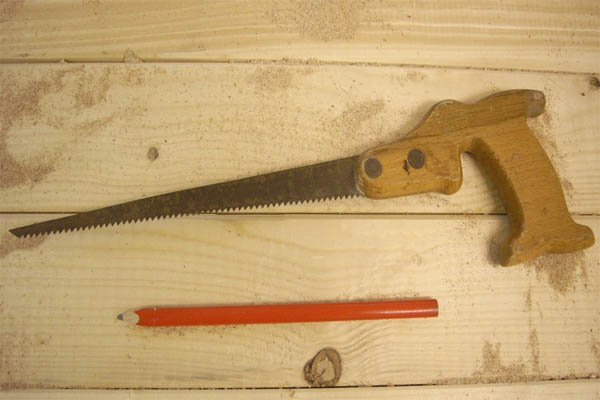Maintaining and Sharpening Handsaw Blades: Ensuring Cutting Precision
In the realm of woodworking, the handsaw is an artisan’s faithful companion, transforming raw timber into works of art and utility.
Yet, even this trusty tool, whether it’s for intricate joinery or the formidable task of cutting trees, can lose its edge with time and use.
This comprehensive guide delves deep into the world of handsaw blade maintenance and sharpening.
It reveals the critical significance of caring for your blade, helping you identify the telltale signs of dullness, and equipping you with the necessary tools and techniques for sharpening.
By exploring the essential role of regular maintenance, you’ll not only revive your handsaw’s performance but also elevate your woodworking prowess to new heights.
The Importance of Blade Maintenance
A handsaw blade is more than just a cutting edge; it’s a symphony of delicate craftsmanship. Keeping your blade in optimal condition is more than a chore – it’s a pathway to:
- Prolonging Lifespan: Regular maintenance extends the life of your handsaw, ensuring its reliability for years to come.
- Consistent Performance: A sharp blade delivers consistent, clean cuts, enhancing the quality of your woodworking projects.
- Safety First: A well-maintained blade reduces the risk of accidents, preventing unexpected slips and uneven cuts.
Cleaning Handsaw Blades
A well-maintained blade begins with cleanliness:
- Removing Debris: Clear away sawdust and debris after each use. A clean blade operates more smoothly and cuts more efficiently.
- Effective Cleaning Tools: Brushes and solvents help dislodge stubborn sawdust and grime from hard-to-reach areas.
- Rust Prevention: Prevent rust and corrosion by ensuring the blade is dry before storage.
Signs of Dull Blades
Blade dullness is more than just an inconvenience; it’s a performance bottleneck:
- Indicators of Dullness: Watch for signs like increased effort required for cuts, splintering wood, and reduced cutting speed.
- Impact on Efficiency: Dull blades strain your effort and yield subpar results, affecting your woodworking efficiency.
- Safety Implications: Dull blades can lead to accidents due to increased force application and loss of control.
Tools for Sharpening Handsaw Blades
Sharpening blades is an art in itself, requiring the right tools:
- Files and Diamond Stones: These are fundamental sharpening tools that reshape and hone the blade’s teeth.
- Honing Guides: These aids ensure consistent sharpening angles, crucial for uniform cutting performance.
- Bench Vices: Secure the blade during sharpening for precise control.
Step-by-Step Sharpening Process
A systematic approach to sharpening yields the best results:
- Secure the Blade: Use a vise or clamp to hold the blade steady during sharpening.
- Angle Matters: Determine the correct filing angle, often indicated by the manufacturer or based on the tooth shape.
- Tooth-by-Tooth Filing: Sharpen each tooth individually with smooth, controlled strokes.
- Honing Guide Usage: Employ a honing guide for uniform sharpening across all teeth.
- Sharpness Test: Assess the blade’s sharpness by conducting test cuts on scrap wood.
Setting the Teeth
Tooth alignment is crucial for even, efficient cuts:
- Understanding Tooth Set: The tooth set determines the kerf width and sawdust clearance.
- Saw Set Tool: Use a saw set tool to adjust the teeth for proper alignment.
- Consistent Set: Ensure uniform tooth set across the blade for balanced performance.
Regular Maintenance Schedule
Consistency is key in blade care:
- Establish a Routine: Create a maintenance schedule based on frequency of use and the types of wood you’re working with.
- Factors Influencing Frequency: Wood type, cutting frequency, and overall use impact the maintenance timeline.
- Benefits of Regular Maintenance: It’s easier to maintain sharpness than restore it. Regular care saves time, effort, and maintains cutting precision.
Storage and Protection
Protecting your blades is an investment in longevity:
- Proper Storage: Store your saw properly – ideally hung on a wall or stored in a dedicated case.
- Blade Covers or Sheaths: Use blade covers to prevent accidental contact and protect teeth from damage.
- Humidity and Moisture: Keep blades shielded from humidity and moisture to prevent rust and corrosion.
Seeking Professional Help
Sometimes, expertise is the best option:
- Professional Sharpening Services: If unsure or for complex blades, consider professional sharpening.
- Benefits of Expertise: Professionals ensure precise sharpening and can even refurbish severely worn blades.
- Local Resources and Recommendations: Seek guidance from local woodworking clubs or professionals for trusted sharpening services.
Conclusion
In the orchestra of woodworking, the handsaw is a virtuoso that creates symphonies from wood.
Maintaining and sharpening your handsaw blades isn’t a mere chore – it’s an investment in precision, safety, and the longevity of your tool.
By dedicating attention to blade care, recognizing signs of dullness, mastering the tools and techniques of sharpening, and committing to regular maintenance, you’ll orchestrate a masterpiece with every cut.
The blade becomes an extension of your craftsmanship, transforming wood into artistry, and your woodworking journey into a testament of precision and skill.

Don Kerr spent many years honing his skills as a DIY woodworker. He finds immense joy in not only creating remarkable pieces but also in generously sharing his knowledge. Connect with him via group.



